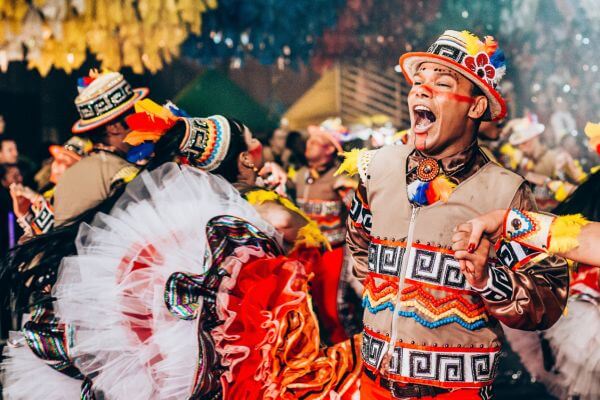Samba is one of the most emblematic musical genres of Brazil, representing the culture and identity of the Brazilian people. How samba emerged: the history of the most Brazilian rhythm?
This question takes us on a journey through time, covering African influences, popular manifestations, and the evolution of the genre until it became one of the country’s main symbols. In this article, we will explore the origins, trajectory, and consecration of samba, as well as its impact on world music.
The Origins of Samba African Influences and Its Arrival in Brazil
How samba emerged, the history of the most Brazilian rhythm is directly linked to the African influences brought by enslaved people who arrived in Brazil during the colonial period. African music, characterized by strong rhythms and intense percussion, was essential for the formation of samba.
The enslaved people brought not only their instruments, such as drums and atabaques, but also their dances and musical traditions. The fusion of these elements with European and Indigenous influences resulted in new cultural manifestations, which developed mainly in Bahia and Rio de Janeiro.
The Birth of Urban Samba in Rio de Janeiro
At the end of the 19th and beginning of the 20th century, the city of Rio de Janeiro became the cradle of samba as we know it today. How samba emerged: the history of the most Brazilian rhythm also passes through the black communities of the capital, which preserved African traditions in parties and popular celebrations.
It was at the house of the Bahian Tia Ciata, in downtown Rio de Janeiro, that samba began to take shape. There, musicians such as Donga, Pixinguinha, and Sinhô gathered to play, sing, and improvise verses. In 1917, Donga recorded “Pelo Telefone,” considered the first samba recording in history. This milestone represented the official recognition of the genre and its popularization throughout Brazil.
The Expansion of Samba and the Emergence of Samba Schools
Over time, samba began to gain space in the media and national festivities. How samba emerged, the history of the most Brazilian rhythm is also associated with the creation of samba schools, which helped structure and professionalize the genre.
In the 1920s and 1930s, the first samba schools emerged, such as Deixa Falar, founded by Ismael Silva. These organizations brought discipline and organization to the parades, becoming an essential part of Rio’s Carnival. From that moment on, samba established itself as one of Brazil’s main musical genres.
The Radio Era and the Popularization of Samba
During the 1930s and 1940s, samba reached the masses through the radio. Artists such as Noel Rosa, Carmen Miranda, and Ary Barroso helped promote the genre, taking it beyond samba circles and carnival parades.
The success of Carmen Miranda, for example, took samba abroad, making it known in Hollywood and Europe. How samba emerged: the history of the most Brazilian rhythm gained a new chapter, with the genre crossing borders and becoming a global phenomenon.
The Various Branches of Samba
Over the years, samba has diversified into different styles, such as:
- Samba-canção: more melodic and romantic, popularized in the 1940s and 1950s;
- Samba de raiz: which preserves the traditional characteristics of the genre;
- Samba-enredo: developed for samba school parades;
- Pagode: a more modern and commercial version of samba, emerging in the 1980s.
Each of these branches has helped keep samba alive and relevant, captivating different audiences and generations.
Samba Today A Brazilian Cultural Heritage
Currently, samba is recognized as an Intangible Cultural Heritage of Brazil by the National Institute of Historical and Artistic Heritage (IPHAN). Its impact goes beyond music, influencing the country’s culture, identity, and economy.
How samba emerged: the history of the most Brazilian rhythm continues to be written, with new artists and innovations keeping the genre current and dynamic. Even with influences from other rhythms, samba remains strong as one of Brazil’s greatest cultural assets.
Concluding about How Samba Emerged The History of the Most Brazilian Rhythm
Throughout this article, we explored how samba emerged: the history of the most Brazilian rhythm, from its African origins to its worldwide consecration. Samba is more than a musical genre; it is an authentic expression of Brazilian identity, carrying in its beats the history, struggle, and joy of the people.
Whether in samba circles, samba school parades, or performances by great artists, samba remains alive and vibrant, celebrating its rich tradition. Thus, when we hear a tambourine or a cavaquinho, we are reliving a bit of this fascinating history and celebrating Brazilian culture in its essence.

